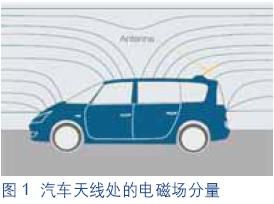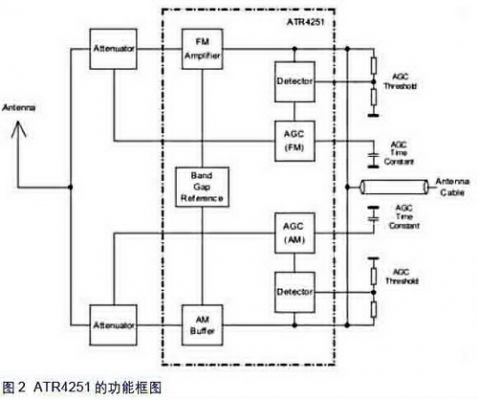Emergency Marine Diesel Generator Emergency Marine Diesel Generator,Marine Generator Water Cooled,Industrial Type Diesel Geneator,Marine Generator Jiangsu Vantek Power Machinery Co., Ltd , https://www.vantekpower.com
Antenna physics knowledge
The traditional AM / FM frequency range has been expanded, and AM broadcasting has now been extended to 30 MHz to enable car radios to receive DRM (World Digital Broadcasting) signals. The frequency range of FM broadcasting starts in the 78 MHz Japanese band and ends in band III with a maximum frequency of 240 MHz. Using this band, DAB signals can be received in Europe.
Because AM broadcast uses vertically polarized radio waves to send signals, the car antenna should also be polarized in the vertical direction. In FM broadcasting, most of the transmitted signals are polarized in the horizontal direction; this seems to conflict with AM reception requirements.
Fortunately, the metal body of the car can change the electromagnetic field, so the vertical antenna required by AM broadcasting can also be used for FM broadcasting. Figure 1 shows the influence of the car body on the electromagnetic field; it can be seen that there is only a vertical electromagnetic field component at the horizontal surface of the car body (for example: roof or trunk). The horizontal component is bent vertically. 
In addition, the opening formed by the window causes the metal surface of the vehicle body to be discontinuous, increasing the field strength. The discontinuous surface structure determines the most suitable installation position of the car antenna. The middle of the roof is usually not the best place to install the antenna.
Because the physical structure of the car body has an enhanced effect on the electromagnetic field, it is feasible to use a small dipole antenna (a type of antenna) to receive AM and FM broadcasts.
For design considerations, the length of the current roof antenna is much shorter than the signal wavelength. In this way, the antenna impedance is very small and has a large capacitive reactance component. If such an antenna is connected to a cable, even if a dedicated low-capacitance cable (such as 20? C 30 pF / m) is used, the final cable capacitance will easily reach 150 pF. In this case, the cable capacitive reactance acts as a capacitive voltage divider, thereby reducing the effective signal strength at the input of the car radio tuner.
In this case, it is best to add an antenna amplifier, especially an isolation amplifier for AM signals between the antenna and the cable. Atmel's monolithic integrated antenna amplifier ATR4251 has a very low input capacitance (2.45 pF) in the AM band, and the impedance of the AM isolation amplifier output is also very low (5 ohms), which is beneficial to drive the cable capacitance. Compared with a passive antenna connected directly to the cable, the solution with an AM isolation amplifier can increase the gain by 35 dB. Of course, the specific lift depends on the antenna and cable impedance.
Due to the different distance from the transmitting station and the shielding effect caused by multi-path interference, the receiving environment may vary greatly. The antenna LNA (Low Noise Amplifier) ​​must be tuned to receive full AM or FM broadcasts and must have excellent large signal performance. The second-order intermodulation intercept point (IP2) and third-order intermodulation intercept point (IP3) are very high.
In addition, for very large signals, automatic gain control (AGC) is necessary to suppress signal peaks and maintain a constant maximum level at the input of the car radio tuner. On the other hand, the antenna amplifier must also have good small-signal performance parameters, especially noise figure and stability factor (k).
Basic principle of ATR4251
ATR4251 is a monolithic integrated AM / FM antenna matching amplifier circuit. Due to the different operating frequency and frequency band requirements, two separate amplifiers can be used for AM and FM frequency bands, respectively. In this way, separate antennas can be used, but the two amplifiers can also be connected to a single antenna (such as a roof antenna).
To avoid excessive excitation in the case of large signals, both amplifiers are equipped with automatic gain control circuits (AGC). With two independent AGC circuits, the thresholds can be adjusted separately to prevent strong AM signals from blocking weak FM stations, and vice versa. The ATR4251 also integrates a level detector to give the amplifier high linearity and excellent large-signal characteristics (FM input intermodulation intercept point is 142 dBμV and AM is 146 dBμV). (See Figure 2: Functional block diagram of ATR4251). 
The AM tuner of a car radio generally uses a PIN diode attenuator at the input. These PIN diode attenuators reduce the signal from the antenna by reducing the input impedance of the tuner. For standard applications, a resistance of about 33 ohms is also connected in series with the output of the AM amplifier of the ATR4251. The series resistance is used to ensure that the radio tuner has a certain source impedance on the one hand; on the other hand, it is used to protect the output stage of the AM antenna amplifier and prevent the short circuit of the PIN diode attenuator in the car radio.
All pins of the NPN transistor of the FM amplifier can be optimally connected from the outside according to customer requirements. For low-cost applications, the common emitter connection method can be used; this connection material has reasonable cost and good performance. For high-end applications, a common base connection with lossless transformer feedback can be used; this connection has a high intermodulation intercept point (OIP3) of 148 dBμV, a low noise figure (2.8 dB), and reasonable current consumption. In the two connection methods, the gain, input and output impedance of the amplifier can be adjusted by changing external components.
The ATR4251 chip is also equipped with two independent AGC circuits for the AM and FM frequency bands, respectively, to prevent the antenna amplifier from being over-excited under very strong antenna signals. The amplifier output is connected to a voltage divider (resistive in AM circuits and capacitive in FM). The dropped signal is applied to the corresponding AGC level detector (the detector is specially optimized to minimize distortion). The rectified signal is compared with the internal reference level. For specific applications, the threshold of the AGC can be easily adjusted by changing the voltage division ratio of the external voltage divider. When the signal reaches the threshold, the AGC output turns on an external transistor; this transistor controls the PIN diode current, thereby reducing the level of the amplifier's input signal.
The built-in bandgap voltage reference circuit can maintain the overall technical parameters without changing with temperature and operating voltage, even if it extends to the automotive temperature range of -40 to +115 ℃. The reason for considering such a high upper limit temperature is because the antenna amplifier will be installed on the roof.
Summary and outlook
Atmel provides highly integrated antenna amplifiers for AM, FM, DRM and HD radios. With this antenna amplifier, excellent reception performance can be achieved. Atmel's antenna amplifier has a large dynamic range, so the sound is clear, and the antenna will not be distorted even when the car is in an extremely difficult situation where the signal strength changes rapidly. This long cable and small size fashionable antenna will cause signal loss, and this loss can be compensated by the impedance matching amplifier.
Atmel has plans to launch an improved version of the ATR4251 to further improve performance and reduce component costs for applications.
Atmel has 30 years of experience in the design of wireless broadcast solutions, such as AM / FM front-end devices or active antenna solutions. One of the important areas is automotive radio. Atmel possesses in-depth radio technology know-how and complies with industry standards (ISO 9001 and TS 16949), thus meeting specific quality and performance requirements of the automotive market. Atmel provides complete solutions for antenna amplifiers and tuner front ends, and there are various development tools (including software and specialized reference designs) to support the implementation of the design.